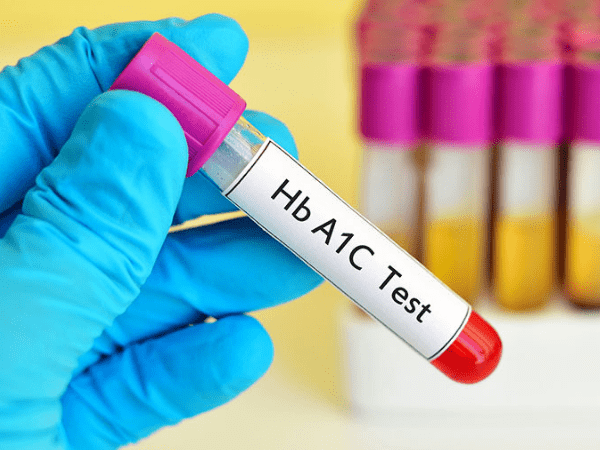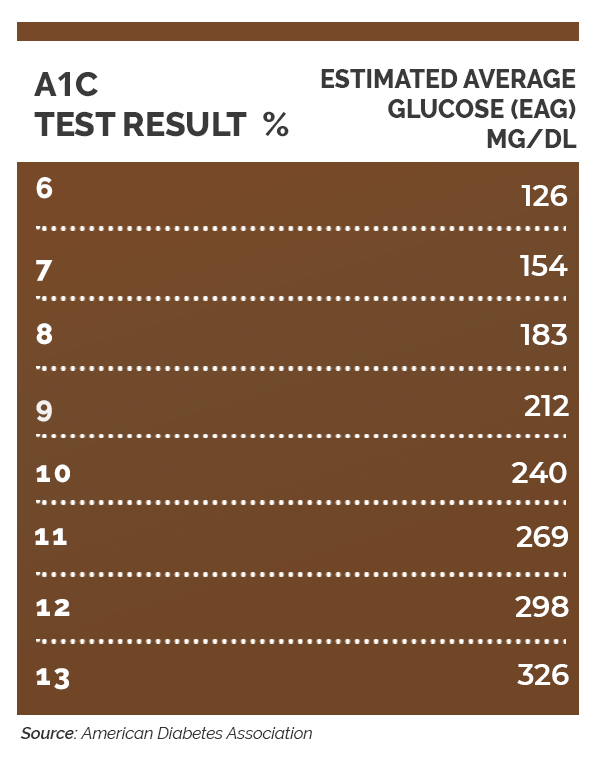Just In
- 51 min ago

- 1 hr ago

- 4 hrs ago

- 5 hrs ago

Don't Miss
- Finance
 Shriram Finance Introduces Online Fixed Deposits At 8.15% Returns
Shriram Finance Introduces Online Fixed Deposits At 8.15% Returns - News
 Congress Will Do X-Ray Of Wealth, Distribute It To 'Select' People: PM Modi
Congress Will Do X-Ray Of Wealth, Distribute It To 'Select' People: PM Modi - Sports
 CHE vs LSG My11Circle Prediction IPL 2024 Match 39: Chennai vs Lucknow Fantasy Tips & Expert Picks
CHE vs LSG My11Circle Prediction IPL 2024 Match 39: Chennai vs Lucknow Fantasy Tips & Expert Picks - Movies
 MasterChef India Telugu New Episode: Chef Nikitha Umesh On MasterChef Telugu Top 10 Contestants
MasterChef India Telugu New Episode: Chef Nikitha Umesh On MasterChef Telugu Top 10 Contestants - Technology
 Sony’s Critically Acclaimed Helldivers 2 Rumored to Release on Xbox, Claims Industry Insider
Sony’s Critically Acclaimed Helldivers 2 Rumored to Release on Xbox, Claims Industry Insider - Automobiles
 Log9 Unveils Amphion & Nexmile – Revolutionizing EV Asset Management
Log9 Unveils Amphion & Nexmile – Revolutionizing EV Asset Management - Education
 Students of the Canadian International School in Bangalore Raise Nearly 60 Lakh Rupees for Bangalore NGOs
Students of the Canadian International School in Bangalore Raise Nearly 60 Lakh Rupees for Bangalore NGOs - Travel
Kurnool's Hidden Gems: A Guide To Exploring India's Lesser-Known Treasures
A1C Test For Diabetes: Everything You Need To Know
Generally, people with diabetes measure their blood sugar levels by doing urine tests or finger pricks at home. These ways provide accurate information, but only for short-term because your blood sugar can vary depending on the time of the day, your physical activity and hormonal changes.
This is one of the reasons a new diagnostic tool called the haemoglobin A1C (HbA1C) test has become important in monitoring diabetes. It measures the average blood sugar level over the past 2 to 3 months [1] .

What Is the A1C test?
The A1C test is a blood test which checks your glucose levels over a span of three months. The test will show you how well you are controlling diabetes. It measures glycated haemoglobin, which is formed when glucose attaches to a protein called haemoglobin in red blood cells. Haemoglobin is responsible for carrying oxygen to different parts of the body.
When your blood glucose levels are high, some of the glucose sticks to the haemoglobin. Haemoglobin A is a type of haemoglobin to which glucose attaches and this combination is called glycated haemoglobin (HbA1C)[2] .
The A1C test is a reliable test which is now being used for diagnosis and screening of prediabetes and diabetes [3] .
Why The A1C Test Is Done & How Does It Work
The test is done to identify prediabetes, diagnose type 1 and type 2 diabetes, and monitor your diabetes treatment plan.
The lifespan of red blood cells is 120 days after which they die and regenerate. This cycle carries on which makes the A1C test more effective as it checks your blood sugar over the past 3 months [4] .
Even if you have had high haemoglobin last week or last month and it's normal now, your haemoglobin will still carry the blood glucose range of that week/month in the form of more A1C in your blood. The numbers then reflect in the test.
According to the National Institute of Diabetes and Digestive and Kidney Diseases, a healthy person without diabetes will have A1C below 5.7 per cent, prediabetics will have A1C level of 5.7 to 6.4 per cent and diabetics will have A1C level of 6.5 per cent or above.

What Happens If Your A1C Number Is High?
When you have high levels of A1C, you have an increased risk of conditions such as cardiovascular diseases [5] , nerve damage, kidney disease, eye damage, the wounds or infections take time to heal and numbness, tingling or lack of sensation in the feet.
To tackle your type 2 diabetes, small changes in lifestyle like losing weight or exercising can help [6] . Speak to your doctor about the best treatment plan for managing diabetes.
How The A1C Test Is Used In The Diagnosis Of Prediabetes & Type 2 Diabetes?
The A1C diagnostic test can be used alone or in combination with other diabetes tests to diagnose prediabetes and type 2 diabetes. A diabetic person need not fast before the blood test, which indicates that the A1C test can be done at any time of the day.
A health care professional will take a sample of your blood by inserting a needle into a vein in your arm or by pricking the tip of your finger with a pointed lancet.
If you don't have symptoms of diabetes but the test shows positive results, take the A1C test another day to confirm the diagnosis.
A study conducted in prediabetic individuals, researchers found that the risk of developing diabetes within 5 years is between 9 and 25 per cent who have an A1C of 5.5 per cent to 6.0 per cent and between 25 per cent and 50 per cent who have an A1C of 6.0 to 6.5 [7] .
What Factors Affect The A1C Test Result?
The A1C test should not be used to diagnose gestational diabetes, type 1 diabetes or cystic fibrosis. Also, the test will give false results if you have conditions like anaemia, kidney failure, liver disease, sickle cell anaemia, and hemodialysis [8] .
Experts recommend that diabetic people should have an A1C test at least twice a year [9] . Another study found that testing A1C four times a year will show a 3.8 per cent drop in A1C levels and testing once every three months will help you maintain blood glucose levels [10] .

Ways To Lower A1C Levels
Incorporating these healthy lifestyle changes can improve your A1C levels:
- Exercising 30 minutes for at least five days a week will keep you physically active. You can either go for a walk, run or ride a bicycle.
- Eat a balanced diet with the right portion sizes which include foods like lean protein, fruits, complex carbohydrates, etc.
- Avoid skipping meals and eat on time as it will help control your blood sugar levels.
- Don't miss your medications and check your blood sugar levels as directed by your doctor.
- [1] Delamater, A. M. (2006). Clinical use of hemoglobin A1c to improve diabetes management.Clinical diabetes,24(1), 6-8.
- [2] World Health Organization. (2011).Use of glycated haemoglobin (HbA1c) in diagnosis of diabetes mellitus: abbreviated report of a WHO consultation(No. WHO/NMH/CHP/CPM/11.1). Geneva: World Health Organization.
- [3] Sherwani, S. I., Khan, H. A., Ekhzaimy, A., Masood, A., & Sakharkar, M. K. (2016). Significance of HbA1c Test in Diagnosis and Prognosis of Diabetic Patients.Biomarker insights,11, 95-104.
- [4] Cohen, R. M., Franco, R. S., Khera, P. K., Smith, E. P., Lindsell, C. J., Ciraolo, P. J., ... & Joiner, C. H. (2008). Red cell life span heterogeneity in hematologically normal people is sufficient to alter HbA1c.Blood,112(10), 4284-4291.
- [5] Cavero-Redondo, I., Peleteiro, B., Álvarez-Bueno, C., Rodriguez-Artalejo, F., & Martínez-Vizcaíno, V. (2017). Glycated haemoglobin A1c as a risk factor of cardiovascular outcomes and all-cause mortality in diabetic and non-diabetic populations: a systematic review and meta-analysis.BMJ open,7(7), e015949.
- [6] Chong, S., Ding, D., Byun, R., Comino, E., Bauman, A., & Jalaludin, B. (2017). Lifestyle Changes After a Diagnosis of Type 2 Diabetes.Diabetes spectrum : a publication of the American Diabetes Association,30(1), 43-50.
- [7] Zhang, X., Gregg, E. W., Williamson, D. F., Barker, L. E., Thomas, W., Bullard, K. M., Imperatore, G., Williams, D. E., … Albright, A. L. (2010). A1C level and future risk of diabetes: a systematic review.Diabetes care,33(7), 1665-1673.
- [8] Radin M. S. (2013). Pitfalls in hemoglobin A1c measurement: when results may be misleading.Journal of general internal medicine,29(2), 388-394.
- [9] American Diabetes Association. (2018). 6. Glycemic targets: standards of medical care in diabetes—2018.Diabetes Care,41(Supplement 1), S55-S64.
- [10] Driskell, O. J., Holland, D., Waldron, J. L., Ford, C., Scargill, J. J., Heald, A., ... & Fryer, A. A. (2014). Reduced testing frequency for glycated hemoglobin, HbA1c, is associated with deteriorating diabetes control.Diabetes Care,37(10), 2731-2737.
-
 diabetesIs There A Normal Blood Sugar Level, According To Age?
diabetesIs There A Normal Blood Sugar Level, According To Age? -
 wellnessGlucose Metabolism Is Surprisingly Normal In Cancer, Says New Study
wellnessGlucose Metabolism Is Surprisingly Normal In Cancer, Says New Study -
 nutritionWhat Is Glucose And Why Is It Important For The Body?
nutritionWhat Is Glucose And Why Is It Important For The Body? -
 wellnessOver 6 Lakh Diabetes Screenings In A Week At Ayushman Bharat Block Health Melas
wellnessOver 6 Lakh Diabetes Screenings In A Week At Ayushman Bharat Block Health Melas -
 diabetesWorld Malaria Day 2022: How Is Diabetes Linked To Malaria?
diabetesWorld Malaria Day 2022: How Is Diabetes Linked To Malaria? -
 diabetesPeople Who Have Had Covid-19 Are More Likely To Develop Diabetes - Says A Study
diabetesPeople Who Have Had Covid-19 Are More Likely To Develop Diabetes - Says A Study -
 diabetesWorld Diabetes Day 2021: Effective Ways To Manage Diabetes During The Winter Season
diabetesWorld Diabetes Day 2021: Effective Ways To Manage Diabetes During The Winter Season -
 diabetesIs Jackfruit Good For People With Diabetes?
diabetesIs Jackfruit Good For People With Diabetes? -
 diabetesWhat Is Diabetic Retinopathy? Stages, Symptoms, Risk Factors, Treatments And Prevention
diabetesWhat Is Diabetic Retinopathy? Stages, Symptoms, Risk Factors, Treatments And Prevention -
 diabetesGuava Fruit And Leaves For People With Diabetes: Are They Healthy?
diabetesGuava Fruit And Leaves For People With Diabetes: Are They Healthy? -
 diet fitnessBenefits Of Cycling For People With Diabetes
diet fitnessBenefits Of Cycling For People With Diabetes -
 diabetesDiabetics Must Include Jamun In Their Diet: Here’s Why
diabetesDiabetics Must Include Jamun In Their Diet: Here’s Why


 Click it and Unblock the Notifications
Click it and Unblock the Notifications



